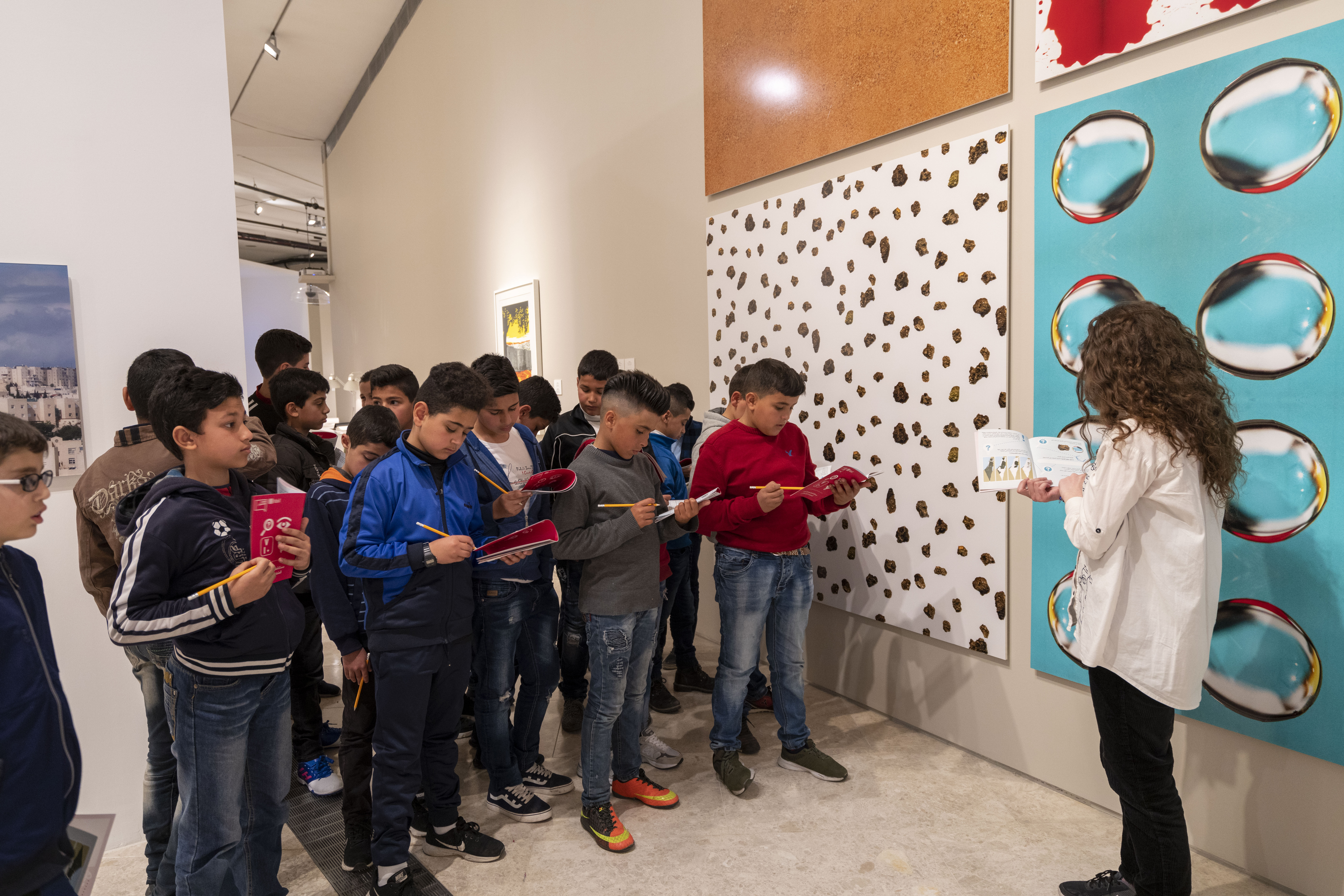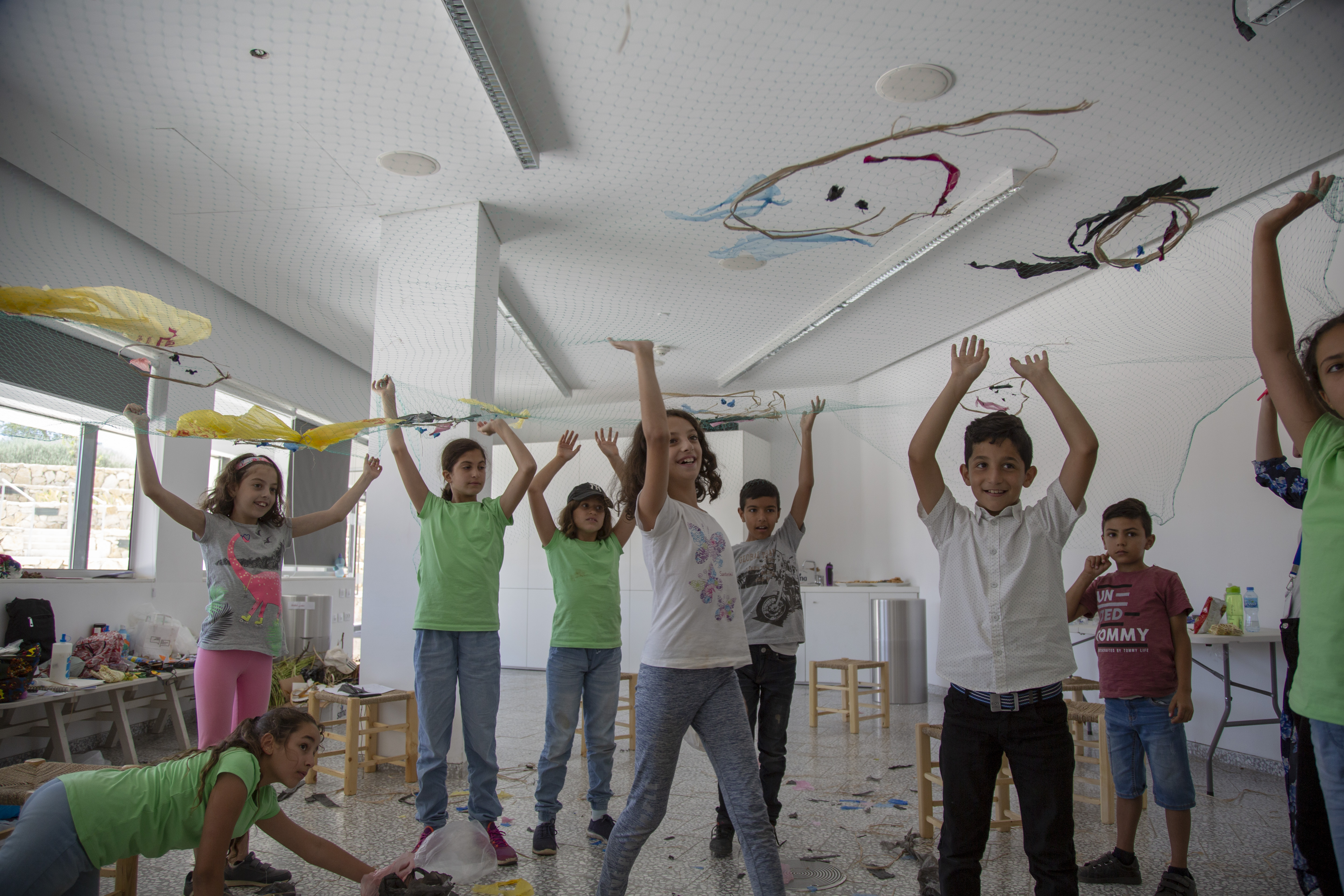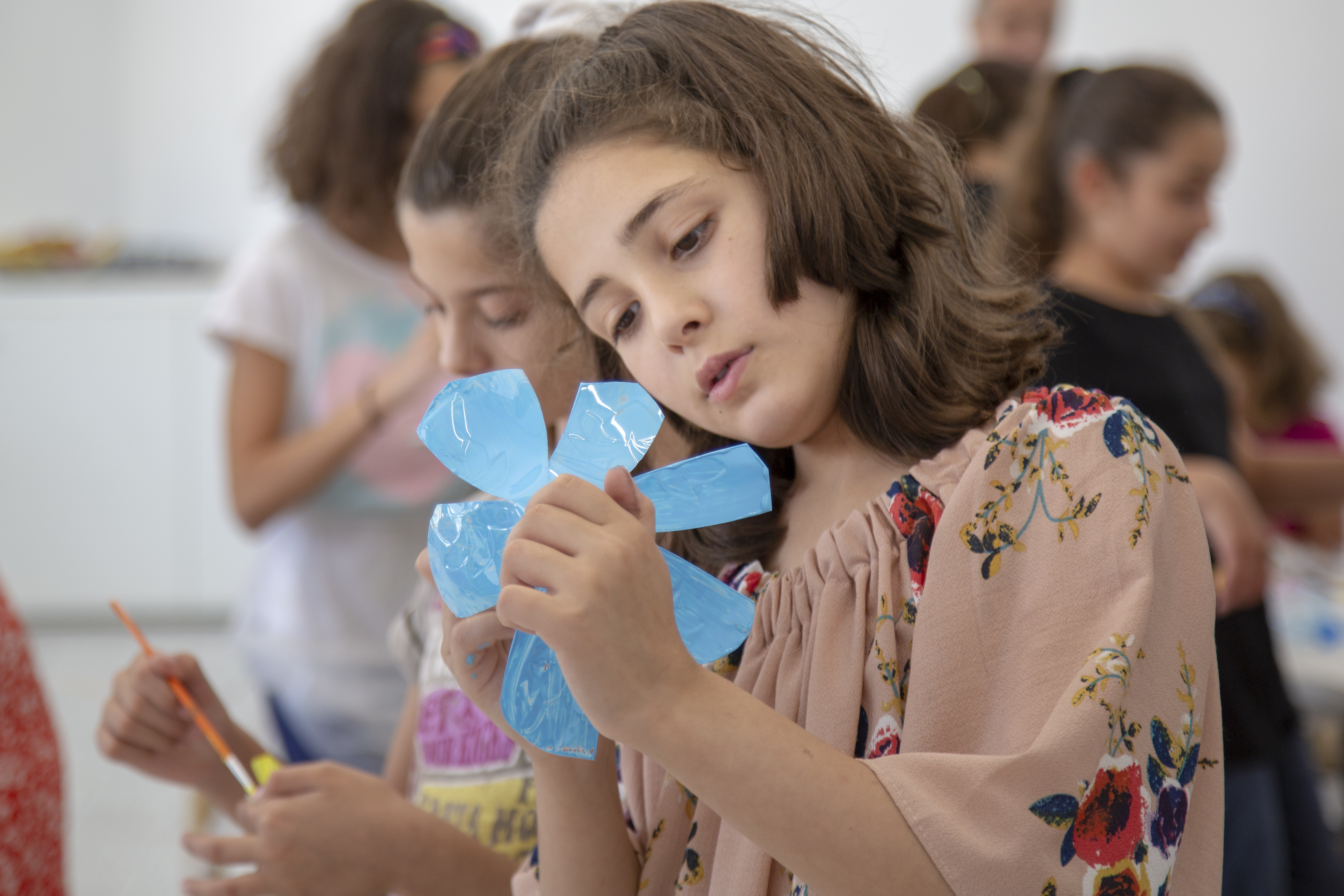| Important dates Auction date: 24 March, 14:30 GMT Please register for the auction by 23 March. All details here Watch Sotheby’s ‘How to Buy at Auction’ video |
Education through Art Support more than 3,000 students’ unique learning experience at the Palestinian Museum Palestinian artist Steve Sabella is offering his artwork, No Man’s Land, for sale at Sotheby’s auction (the world’s oldest and largest auction house), for the benefit of the Palestinian Museum’s Education Programme. More information: Tel +970(2)2941948 donations@palmuseum.org |
| Collaboration between the Palestinian Museum and Sotheby’s Steve Sabella Offers New Artwork for Auction to Benefit the Museum’s Education Programme Berlin-based Palestinian artist, Steve Sabella has put his artwork, No Man’s Land, up for auction at Sotheby’s, the oldest and largest auction house in the world. The auction will be held on 24 March 2020 at 14:30 GMT. Sabella will donate all sale revenues to benefit the Palestinian Museum’s Education Programme. The Education Programme is a key component of the Palestinian Museum’s programmatic strategy. Annually, the programme develops and hosts interactive educational activities benefitting more than 3,000 students from 60 schools, in addition to activities geared towards university students and intergenerational groups. The programme also produces educational resources that promote children’s critical thinking, improve their visual and cognitive perception and nourish their imagination and creativity. No Man’s Land (2015) is an impressive six-metre-wide photographic triptych, which was featured in the Palestinian Museum’s historic international group exhibition, Intimate Terrains: Representations of a Disappearing Landscape. Addressing the importance of art in the Palestinian context, Sabella said, ‘In the fragmented land of Palestine, art has become the ambassador for the nation’s eternal struggle for liberation. Art can be a great tool of resistance, as it can transform the impossible into the next creative innovation.’ For her part, Director General of the Palestinian Museum, Adila Laïdi-Hanieh, PhD, said, ‘We cherish Steve’s initiative and value his belief in the Museum’s mission of developing non-conventional education to create a better tomorrow. We are grateful to Sotheby’s for generously agreeing to include No Man’s Land in their prestigious 20th Century Art / Middle East sale which features sought-after artists from the modern era to the contemporary period. “ |
|
    |
The Palestinian Museum Education Programme The Palestinian Museum education programme engages all sectors of the public, particularly Palestinian school and university students. The programme encourages them to embrace their roles as active participants in shaping Palestine’s cultural scene. Nurturing creativity and critical thinking among the participating public, the programme also urges artistic self-expression. Through a wide array of interactive activities, participants are provided with opportunities to produce their own works, reflecting their aspirations and perspectives. To sustain this programme, the Palestinian Museum relies on the continued support of its friends, individuals and institutions, who believe in the importance of the Palestinian individual’s role in weaving their own narrative, expressing themselves, demanding their rights, and creating a better future. Facts and Figures - 12,392 students have benefitted from the education programme since the Museum’s inauguration. - 265 schools have visited the Museum since its inauguration. - 35 educational/learning activities have been organised since the Museum’s first exhibition. - Strategic partnerships have been formed with the Palestinian Ministry of Education as well as various public and private schools. - 10 educational resources have been produced: · Palestinian Museum Explorers: an interactive trail exploring the Labour of Love and Intimate Terrains exhibitions. · Teacher’s Companions for the Labour of Love and Intimate Terrains exhibitions: booklets containing a series of activities to prepare students for their visits to the exhibitions, and others to complement the learning experience afterward. · Colouring books based on Feast of Ashes: the Life and Art of David Ohannessian by Sato Moughalian and the Labour of Love exhibition. · A treasure hunt game based on the Jerusalem Lives exhibition as well as a memory card game based on Labour of Love. · Tinkering in the Conservation Lab that encourages students to learn about the reasons, importance, and process of conserving paper documents. Selected Activities - The Tale of Sheikh Sa’ed Village (a series of narrative arts workshops): participants produced six stories about the village, a comic book, and a shadow-theatre video. - Map of Jerusalem (a collage workshop): participants in Gaza created a map of Jerusalem using collage techniques. (in cooperation with the Child Center– A M Qattan Foundation) - Upcycling Wood to Build a Playhouse: Participants built a playground using recycled materials at al-Bustan Association in Silwan, Jerusalem. - Jerusalem Lives Summer Camp: six panoramic paintings about Jerusalem were created. - Representing the Implicit Fragility of Embroidery through Origami (conceptual origami workshop): six Palestinian thobes were adorned with paper origami representing traditional Palestinian embroidery patterns. - Land Art workshop: five works of art inspired by nature and a collection of songs were produced. - Stories from the Palestinian Refugee Camp (comics course): three illustrated comic books on landscape in al-Maghazi refugee camp in Gaza were produced. |
 No Man’s Land, 2015. Lightjet prints mounted on matt diasec 3.5-cm aluminum box edge. 200 x 200 cm |
Steve Sabella No Man's Land The surreal collages are composed from images of Victoria Park lake in London. The residue of the everyday environment––rotting leaves, feathers, pollen, dust––are caught in sharp detail. They are transformed in the collage process—the lake’s surface appears instead like the darkness of space, with interminable depth, a topographic map or a microscopic view of the ocean floor. These abstract, ambivalent landscapes ask us to imagine our surroundings anew, to see a speck of dust as representative of all the mysteries of the universe. Steve Sabella says: Collectively, we’re still in the early stages of understanding the power of photographic images. From the first instances of cave art, images have represented an illustrated consciousness of the world. Today, however, we have perhaps entered an era in which images can be unfixed from reference to float freely in our imagination, uprooted from the human desire to accurately record the world. As such, I think of photography as a star that has not yet been fully explored, shining in the far reaches of our galaxy. What I know about the star—or the photographic surface—comes from my interpretation of its luminous appearance. But there is so much more to see and discover. No Man’s Land is a series of three collages composed from images of Lake Victoria. Elements from our everyday world––rotting leaves, feathers, pollen dust––are caught in sharp detail. At the same time, they are transformed in the collage process: the lake’s surface appears now like the darkness of space, interminable depth. Then again, what might be the cosmos could also be a topographic map, or a microscopic view of the ocean floor. We don’t know where we belong here. If they reflect anything, these are images of a present defined by shifting borders and displaced origins, existence in the threshold. Between micro and macro, reality and surreality, the two dimensions of a photo and the immateriality of an image, No Man’s Land creates a whole new world of its own. About Steve Sabella Steve Sabella (1975, Jerusalem, Palestine) uses photography as his primary mode of expression. He is known for his imaginative use of the medium and painterly photographic collages, his most recent being The Great March of Return (2019), including over one thousand photographs captured by five Palestinian journalists from Gaza contrasted with photos of outer space, in a monumental ‘present-day fresco’. His award-winning memoir The Parachute Paradox (Kerber Verlag, 2016) follows his upbringing in occupied Jerusalem, his search for liberation from within, and his developing means of resistance to the colonised imagination. Through his art and writing, Sabella works beyond narratives of exile. What is articulated is the human connection transcending culture and nationality, and an advocation for global citizenship. Sabella holds an MA in Photographic Studies from the University of Westminster, London and an MA in Art Business from Sotheby’s Institute of Art, London. In 2008, Sabella received the Ellen Auerbach Award from the Akademie der Künste in Berlin leading to the publication of his monograph Steve Sabella - Photography 1997–2014 (Hatje Cantz, 2014). His artwork has been exhibited and is held in collections internationally. For more about the artist: www.stevesabella.com |
This page has outdated data, please use the main menu to brows the up-to-date website data.